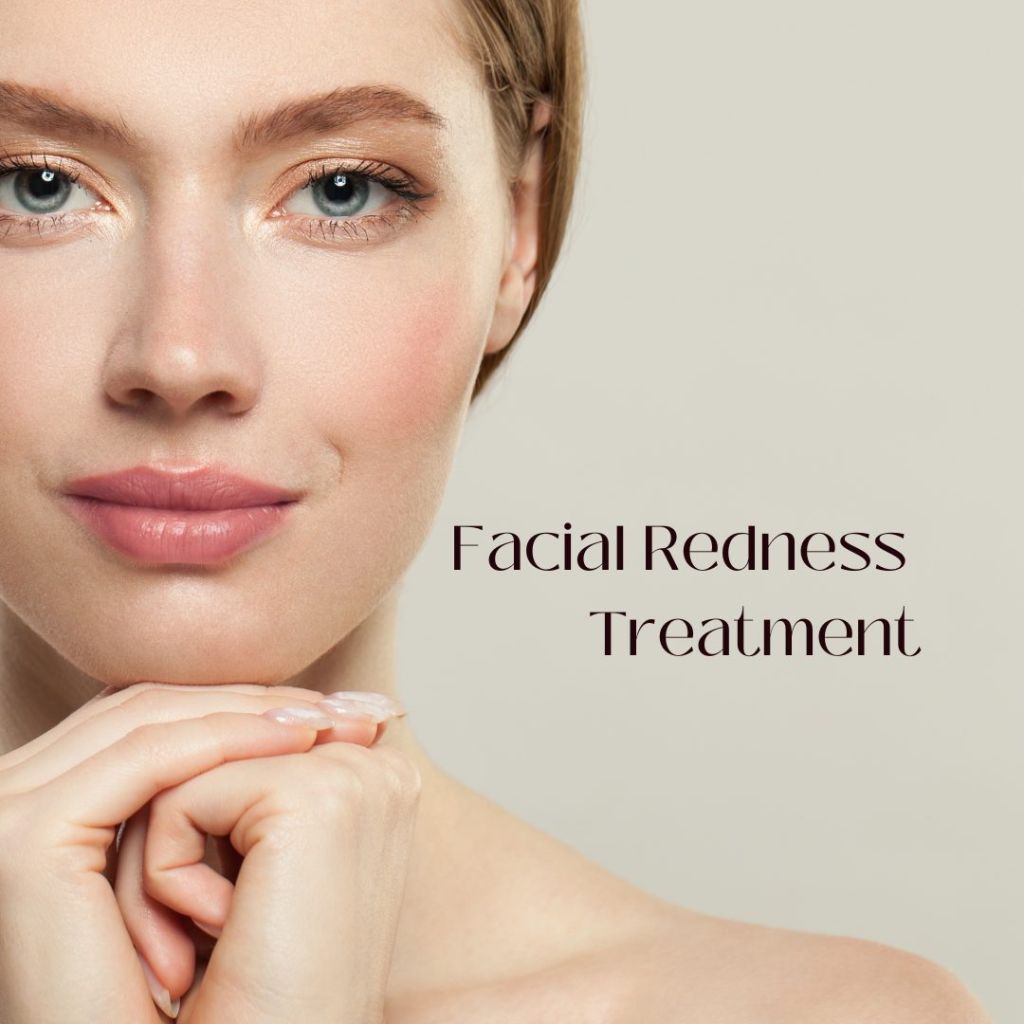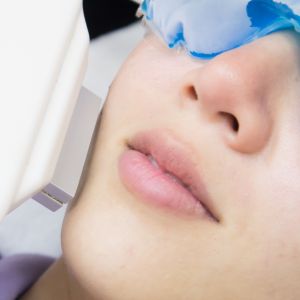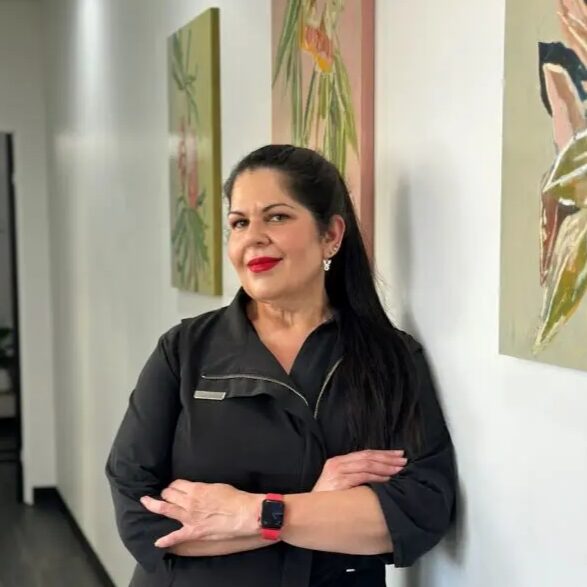Facial Redness | Anti-Redness Serums and Treatment for Rosacea Skin
Broken Capillaries, Rosacea, Post-Inflammatory Erythema and Skin Irritation
Facial redness, whether caused by rosacea skin, broken capillaries on the face, or general skin irritation, is a common concern that requires a targeted, multi-pronged approach. This guide explores the root causes, anti-redness serums, and clinical treatments to calm rosacea skin for a healthier, calmer complexion.
Key Active Ingredients for Anti-Redness Serums
- Niacinamide: Calms inflammation, strengthens the skin barrier, and reduces redness of rosacea skin and irritated sensitive skin.
- Azelaic Acid: Soothes irritation, reduces post-inflammatory erythema and rosacea skin and supports skin barrier repair.
- Tranexamic Acid: Calms inflammation reduces redness from inflamed, irritated skin, melasma,
- Madecassoside (Centella Asiatica) Repairs the skin barrier and calms inflammatory responses, assisting with facial redness, including irritated, sensitive skin and rosacea.
Facial Redness Treatment at Pearl
At Pearl Medispa, we use a multi-pronged approach to treat redness-prone skin, including rosacea, broken capillaries on the face, post-inflammatory erythema, and other causes of facial redness. Our team offers treatments such as anti-redness serums, IPL, facials, and personalised skincare plans.
Free Consultation with our Laser Therapist, Nurse Christine
Book an initial consultation with our laser therapist, Nurse Christine. Christine will assess your skin and be able to let you what is the best approach for your particular concern. If necessary, she can refer you to our doctors. Please call 07 3350 5447 or book online.
Facial Redness | Rosacea Skin
Key Causes of Facial Redness
1. Inflammatory Skin Conditions
- Rosacea Skin: CharacterizedCharacterisedacial redness, flushing, and visible blood vessels or broken capillaries.
- Eczema: This leads to redness and irritation from inflammation.
- Post-Inflammatory Erythema (P.I.E): Redness following acne, irritation, or inflammation.
2. Lifestyle and Environmental Factors
- UV Damage: Prolonged sun exposure damages the skin and worsens redness.
- Over-Exfoliation: Aggressive skincare practices compromise the skin barrier.
- Heat Triggers: Hot drinks, saunas, and temperature fluctuations exacerbate redness.
3. Dietary Triggers
- Capsaicin: Found in spicy foods and hot sauces.
- Cinnamaldehyde: Present in tomatoes, citrus fruits, cinnamon, and chocolate.
- Alcohol: Especially wine and hard liquor.
4. Skin Barrier Damage
- Caused by excessive cleansing, harsh treatments, or environmental factors.
Treatment Options for Facial Redness
1. Topical Anti-Redness Serums
Topical treatments, including anti-redness serums, can effectively target the underlying causes of facial redness.
Key Active Ingredients for Anti-Redness Serums
The best anti-redness serums contain combinations of ingredients; here is a summary of our most favoured ingredients. However, there are many other ingredients, including calming anti-inflammatory ingredients. For a more comprehensive list
- Niacinamide: Calms inflammation, strengthens the skin barrier, and reduces redness of rosacea skin and irritated sensitive skin.
- Azelaic Acid: Soothes irritation, reduces post-inflammatory erythema and rosacea skin and supports skin barrier repair.
- Tranexamic Acid: Calms inflammation reduces redness from inflamed, irritated skin, melasma,
- Madecassoside (Centella Asiatica) Repairs the skin barrier and calms inflammatory responses, assisting with facial redness, including irritated, sensitive skin and rosacea.
2. In-Clinic Treatments
- LED Light Therapy: Red and infrared light therapy effectively calms post-inflammatory redness, reduces rosacea skin-associated inflammation, and acts on any irritated sensitive skin type.
- IPL (Intense Pulsed Light) reduces the appearance of broken capillaries and facial redness by targeting visible blood vessels. It is also very effective for treating rosacea.
- Laser Therapy: Ideal for treating persistent redness and telangiectasia. Suitable for rosacea skin.
- Microtox Facial: Delivers small anti-wrinkle injections into the dermis to reduce flushing and erythema.
- Microneedling: Improves collagen production and enhances ingredient absorption for redness-prone skin.
Biological Pathways and Ant-Redness Serum Ingredients
Toll-Like Receptor-2 (TLR-2): Overactivation leads to inflammation, particularly in rosacea.
- Ingredients: Niacinamide, curcumin, resveratrol.
Serine Proteases: Overactivity amplifies irritation and redness.
- Ingredients: Azelaic acid, tranexamic acid.
Protease-Activated Receptor-2 (PAR-2): Involved in pigmentation and inflammatory responses.
- Ingredients: Tranexamic acid, paeonol.
Vascular Endothelial Growth Factor (VEGF): Encourages visible blood vessels and redness.
- Ingredients: Ellagic acid, rosmarinic acid.
PPAR Activation: Supports skin barrier integrity and reduces inflammation.
- Ingredients: Azelaic acid, ursolic acid.
Lifestyle and Dietary Tips for Redness-Prone Skin
1. Adopt an Anti-Inflammatory Diet
- Focus on a Mediterranean-style diet to reduce systemic inflammation.
2. Avoid Rosacea Triggers
- Heat-related triggers: Hot drinks, saunas.
- Dietary triggers: Capsaicin, cinnamaldehyde, and alcohol.
3. Protect Skin from UV Damage
- Use a broad-spectrum sunscreen with zinc oxide or tinted formulas to protect against visible light.
4. Strengthen the Skin Barrier
- Incorporate ceramide moisturiser serums into your routine.
Approach to Rosacea Redness Treatment
Dietary Intervention
- Address gut dysbiosis, particularly small intestine bacterial overgrowth (SIBO), through gut-healing protocols and anti-inflammatory diets.
Cosmetic Treatments
- Early-stage rosacea skin can benefit from dietary and topical interventions.
- Advanced cases with visible capillaries may require IPL or laser therapy for effective redness reduction.
Long-Term Care
- For optimal results, combine IPL with dietary changes, lifestyle modifications, and topical treatments.
Laser Therapist Nurse Christine
Christine performs laser and light treatments, beginning with a skin assessment to develop treatment plans to address various cosmetic skin concerns, such as skin tightening, tone brightening for pigmentation and facial redness, laser rejuvenation for photodamage, and picotoning.
Christine collaborates with our cosmetic doctors and facial therapists to obtain optimal aesthetic outcomes for you. Christine is trained in Pico laser and CO2 laser, BBL intense pulsed light, Tixel, HIFU, microneedling, a full range of peels, facials, and LED. She also advises on skincare for a full range of skin concerns. If required, she will organise consultations with our doctors.
Free Consultation with our Laser Therapist, Nurse Christine
Book an initial consultation with our laser therapist, Nurse Christine. Christine will assess your skin and determine the best approach for your particular concern. Please call 07 3350 5447 or book online.



